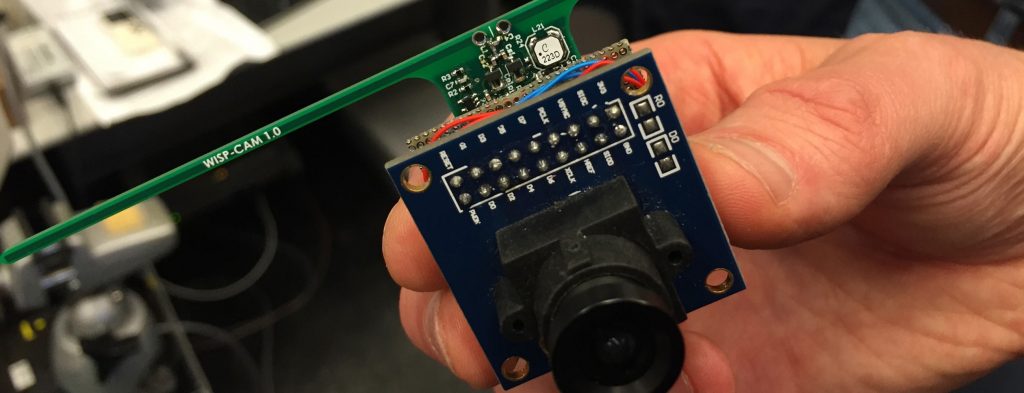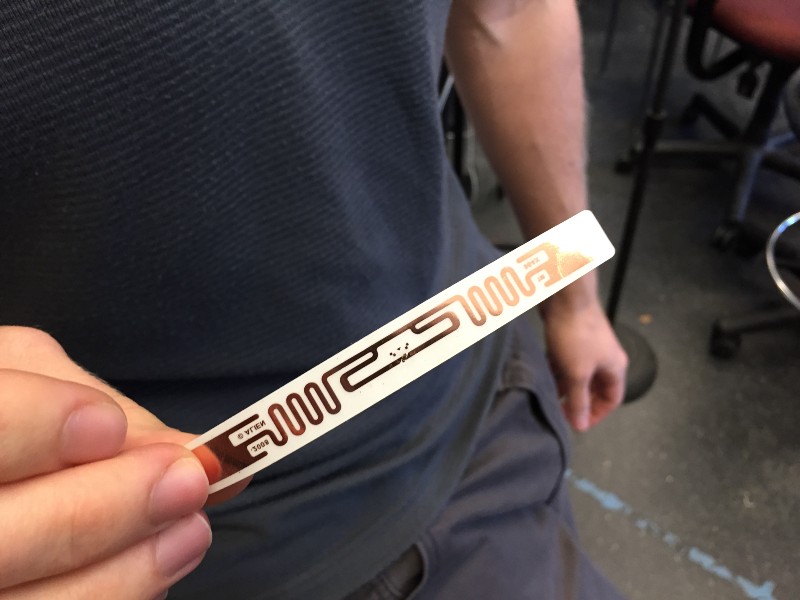

In a cluttered lab at the University of Washington in Seattle, a small gadget is slowly beaming a photo to a nearby computer. It is devices like this that could make up the much-hyped Internet of Things, a vision of billions of interconnected sensors that will one day give the physical world a digital voice.
Imagine trees monitoring pollution, bridges that report when they need repair or implanted medical devices conducting check-ups dozens of a times a day. Now imagine having to revisit each of these billions of sensors every month to change or recharge their batteries. The problem is that communicating via cellphone signals or WiFi takes a lot of power, which means large batteries and thus, bulky, expensive devices.
But this chip in Seattle doesn’t need a radio. And it doesn’t even have a battery at all. It relies on two breakthroughs that could kick-start an Internet of Things sooner than anyone thought possible. “Electronics have got a trillion times more efficient in the last 50 years,” said Joshua Smith, the professor leading the effort to develop the technology. “But the radio signals in the air have been about the same.”
Smith has realized that the whispers of energy contained in everyday television broadcasts, even from many miles away, can be harvested using nothing more than an antenna and some clever electronics. But while this energy is enough to power the newest ultra-efficient sensors, it is still hundreds of times less than is needed for WiFi communication–or traditional WiFi communication, at least. Smith’s revolutionary innovation offers a way for tiny chips to send data to WiFi devices like laptop computers and smartphones without broadcasting anything at all.

If that sounds impossible, consider an injured hiker signaling rescuers with a mirror. The hiker wobbles her mirror to reflect sunlight, spelling out SOS in Morse code. In a similar way, Smith’s so-called “backscatter” chip communicates by either absorbing or reflecting WiFi signals around it using its antenna. The antenna can switch modes very quickly, transmitting up to a thousand bits of information a second in its own unique code. That’s a fraction of the bandwidth needed for a phone call, say, but it’s plenty to send position and environmental data, or even a digital photo if the transmission lasts long enough. An app on the phone or computer then decodes the information, with no new hardware needed.
Just as the hiker uses sunlight to send her message, backscatter chips require WiFi signals to modulate. In fact, the more WiFi networks there are around, the more power the chips can scavenge, making them well suited to our increasingly digitized cities. Backscatter won’t work in the analog wilderness, however, and even its indoor range is currently limited to maybe a dozen feet. Smith’s team is now working to cover a whole home. At that point, WiFi backscatter could be used to connect the next generation of domestic sensors, such as smart thermostats, indoor air quality monitors, baby cameras and burglar alarms. And without pricey batteries or radios on board, these promise to be very, very cheap.
Smith holds up a shiny, flexible tag about the size of a Band-Aid and points to a tiny speck at its heart. “There’s an antenna here and an integrated circuit that you can’t even see because it’s so small. It has an amazing amount of computing power, as much as a room-filling computer from the 1950s,” he said. “This whole thing costs just 5 cents today.” Smith is certain that his backscatter gadgets, even cameras, will be this small and affordable in just a few years. The tags could be designed to siphon energy from TV broadcasts, WiFi signals, cellphone towers or a combination of all three.
If Smith can make connected sensors as cheaply as he believes by working with the WiFi networks, phones and tablets that people already own, the elusive Internet of Things might finally appear, like the power that sustains it, almost out of thin air.


How We Get To Next was a magazine that explored the future of science, technology, and culture from 2014 to 2019. This article is part of our The Internet section, where we report on the past, present, and future of the information superhighway. Click the logo to read more.
